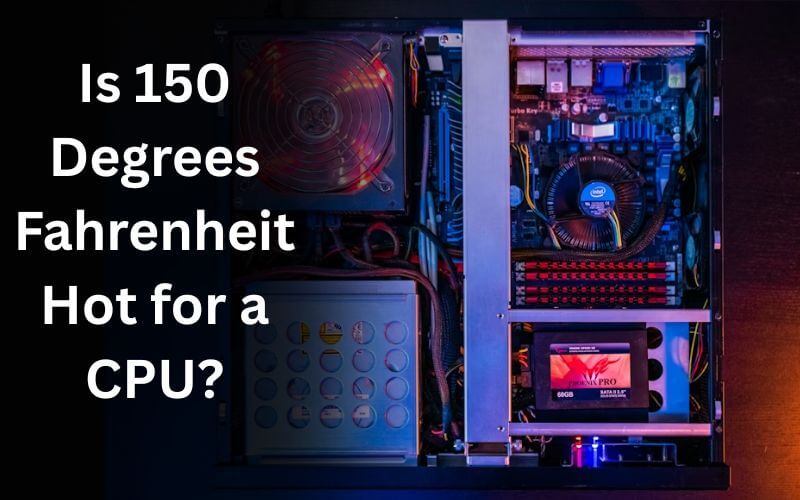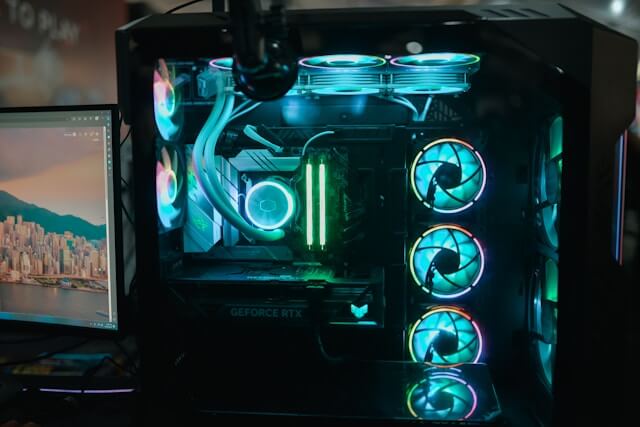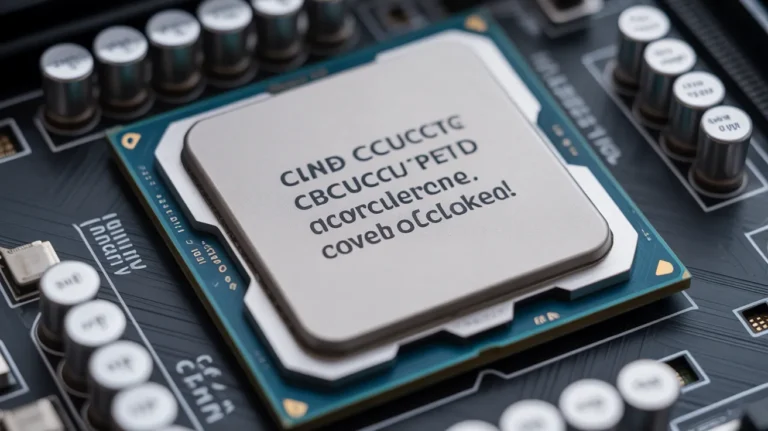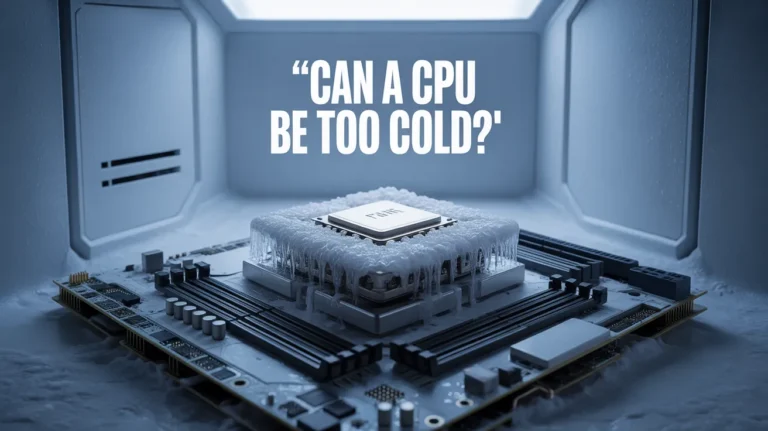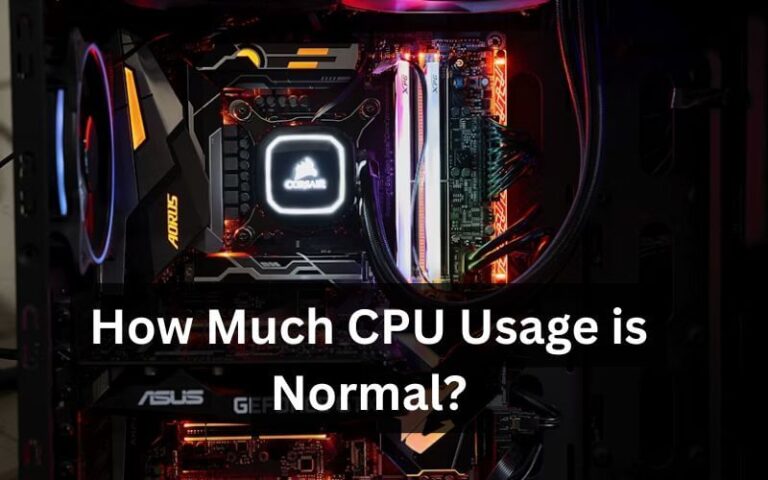Is 150 Degrees Fahrenheit Hot for a CPU?Safe Temps Explained
Wondering if 150°F is dangerous for your CPU? Learn what temperatures are safe, when overheating starts, and simple tips to keep your processor cool and running smoothly.
In this detailed guide, we will explain what a normal CPU temperature looks like, why 150°F is considered high, and how you can protect your computer from overheating.
What Is a Normal CPU Temperature?
Before understanding whether 150 degrees Fahrenheit is hot for a CPU, it’s important to know what is considered a normal temperature range.
Here’s a general breakdown:
| Usage Type | Safe Temperature (Fahrenheit) |
| Idle (No heavy apps running) | 86°F to 113°F |
| Moderate Usage (Browsing, MS Office) | 113°F to 131°F |
| Heavy Usage (Gaming, Rendering) | 131°F to 140°F |
| Danger Zone | Above 149°F |
Ideal Range: 90°F – 140°F
Critical Zone: Anything above 150°F is risky.
Is 150 Degrees Fahrenheit Hot for a CPU?
Yes, 150 degrees Fahrenheit is hot for a CPU. In fact, most computer experts agree that this temperature borders on dangerous. While some CPUs are designed to tolerate short spikes in temperature, running consistently at or above 150°F can lead to:
- Thermal throttling (automatic slowing of performance to reduce heat)
- Reduced lifespan of the CPU
- Increased risk of sudden shutdowns or crashes
- Permanent damage to motherboard components
So, if you’re asking is 150 degrees Fahrenheit hot for a CPU, the answer is simple: Yes, and you should take action immediately.
Factors That Affect CPU Temperature
Several factors can influence your CPU’s temperature. Understanding these can help you manage it effectively and avoid overheating.
1. Workload and Usage
The more tasks your CPU handles, the more heat it generates. Intensive activities like gaming, video editing, or running virtual machines push your CPU to work harder. This naturally leads to higher temperatures. Conversely, light tasks like browsing the web or checking emails keep temperatures lower.
2. Cooling System
Your computer’s cooling setup plays a huge role in temperature management. A good cooling system—whether air cooling or liquid cooling—can dissipate heat effectively. If your system’s fans or heatsinks are dirty or malfunctioning, your CPU may heat up quickly.
3. Ambient Temperature
The temperature of your surroundings affects your computer. If the room is hot, your CPU will struggle to stay cool. Computers in well-ventilated, air-conditioned spaces tend to perform better in terms of temperature control.
4. Overclocking
Overclocking boosts your CPU’s performance by increasing its clock speed. While this can improve speed, it also generates extra heat. Overclocked systems require advanced cooling solutions to counteract the additional heat.
5. Case Airflow
Proper airflow inside your computer case helps regulate temperature. A cramped or poorly ventilated case can lead to heat buildup. Ensuring clear airflow paths and using case fans can reduce this risk.
By addressing these factors, you can better manage your CPU temperature and keep it within safe limits.
What Happens to a CPU at 150°F?
At 150°F, a CPU starts to face serious risks. Here’s what happens:
- Thermal Throttling: Your CPU will automatically slow itself down to lower the temperature. You’ll notice lagging, freezing, or reduced performance.
- Component Damage: Motherboards, RAM, and other nearby components can suffer heat damage over time.
- Blue Screens / Crashes: Frequent overheating leads to sudden shutdowns or error screens.
- Permanent Hardware Damage: If ignored, prolonged heat can shorten your CPU’s lifespan significantly.
How to Lower CPU Temperature Below 150°F
If you want to protect your PC, here’s how you can bring temperatures down safely:
1. Clean Your PC Regularly
Dust blocks airflow. Clean fans, vents, and heatsinks every 2-3 months.
2. Reapply Thermal Paste
If your PC is a few years old, apply fresh, high-quality thermal paste for better heat transfer.
3. Improve Airflow
Ensure your PC case has proper intake and exhaust fans. Avoid placing it in tight spaces.
4. Upgrade Your Cooling System
Consider aftermarket CPU coolers or liquid cooling solutions for better performance.
5. Optimize Fan Settings
In BIOS or fan control software, set your fans to run faster when temperatures rise.
6. Lower Room Temperature
Use air conditioning or a cooler environment to help your PC maintain safe temperatures.
How to Monitor CPU Temperature?
It’s easy to keep an eye on your CPU temperature using free tools. Here are some popular options:
| Software | Features |
| HWMonitor | Real-time temperature, voltage, fan speeds |
| Core Temp | Focuses on CPU temperature |
| MSI Afterburner | Good for gaming rigs |
| Speccy | Full PC health overview |
Make sure you regularly check temperatures if you do heavy work like gaming, editing, or 3D rendering.
Frequently Asked Questions (FAQs)
Is 150 degrees Fahrenheit hot for a CPU while gaming?
Yes, 150°F is considered too hot even during gaming. Modern gaming CPUs should ideally stay below 140°F under full load.
What is the maximum safe temperature for most CPUs?
Most CPUs have a maximum safe temperature of around 176°F (80°C). Staying below this limit prevents overheating.
Can a CPU recover after overheating to 150°F?
Occasional spikes to 150°F won’t destroy your CPU instantly, but repeated overheating reduces its lifespan.
What temperature should I aim for under heavy load?
Ideally, keep your CPU under 140°F during heavy tasks for maximum performance and lifespan.
Is it normal for laptops to reach 150°F?
Laptops can run hotter than desktops due to less ventilation, but even then, 150°F is risky and should be addressed.
Is 100°F bad for a CPU?
No, 100°F is well within the normal range for an idle CPU. It’s considered safe.
Conclusion
So, is 150 degrees Fahrenheit hot for a CPU? Absolutely. If your CPU is reaching this temperature, you need to act fast to cool it down. Keeping your CPU at safe temperatures not only ensures smoother performance but also extends the life of your expensive hardware. Clean your system, improve cooling, and monitor temperatures regularly to keep your computer healthy.
Final Tip:
Remember: Prevention is cheaper than repair. Always prioritize cooling and airflow in any PC build.

